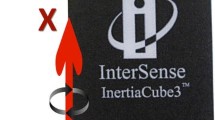Abstract
Understanding scapular motion during everyday tasks is essential for adequate return-to-work and intervention programming, yet most scapular assessments involve restricted motion analysis within a laboratory setting. Inertial measurement units (IMUs) have been used to track scapular motion, but their validity compared to “gold standard” optical motion capture is not well defined. Further, it is unclear how different IMU sensor placements could affect scapular kinematic outcomes during a functional task protocol. To assess the reliability of scapular motion measurements with the use of the “gold standard” optical motion capture and IMUs, and to compare scapular IMU placement to assess which location (acromion or spine) was best for reliability of scapular motion, participants completed two testing sessions. During each lab visit, participant torso, humeri, and scapulae motion was tracked during 3 trials of 8 dynamic tasks and two elevation movements. Scapular angles were extracted during each task. To assess intra-session reliability, intra-class correlation coefficients (ICCs), and root mean square errors (RMSEs) were calculated. Results showed ICCs and RMSEs were acceptable. Although there appeared offsets between the two motion capture system scapular kinematics outcomes based on the plotted waveforms, the movement patterns appeared consistent between both motion capture methods. Data also showed that acromion IMU placement produced slightly more reliable outcomes than placement on the spine.
Graphical Abstract
Two placements of scapular tracking IMUs were tested with identical procedures.





Similar content being viewed by others
References
Ludewig PM, Cook TM, Nawoczenski DA (1996) Three-dimensional scapular orientation and muscle activity at selected positions of humeral elevation. J Orthop Sports Phys Ther 24(2):57–65
Lempereur M, Brochard S, Leboeuf F et al (2014) Validity and reliability of 3d marker based scapular motion analysis: a systematic review. J Biomech 47(10):2219–2230
Borstad JD, Szucs KA (2012) Three-dimensional scapula kinematics and shoulder function examined before and after surgical treatment for breast cancer. Hum Mov Sci 31(2):408–418
Karduna AR, McClure PW, Michener LA et al (2001) Dynamic measurements of three-dimensional scapular kinematics: a validation study. J Biomech Eng 123(2):184–190. https://doi.org/10.1115/1.1351892
Lang AE, Milosavljevic S, Dickerson CR et al (2020) Examining assessment methods of scapular motion: comparing results from planar elevations and functional task performance. Clin Biomech 80:105203
MacLean KFE, Chopp, JN, Grewal, T-J, et al. (2014) Three-dimensional comparison of static and dynamic scapular motion tracking techniques. J Electromyogr Kinesiol 24 (1), 65–71. Retrieved from https://www.sciencedirect.com/science/article/pii/S1050641113002320. https://doi.org/10.1016/j.jelekin.2013.09.011
Thigpen CA, Gross MT, Karas SG et al (2005) The repeatability of scapular rotations across three planes of humeral elevation. Res Sports Med 13(3):181–198. https://doi.org/10.1080/15438620500222489
Yildiz TI, Eraslan L, Demirci S et al (2020) The repeatability of 3-dimensional scapular kinematic analysis during bilateral upper extremity movements. J Bodyw Mov Ther 24(4):37–42
Friesen KB, Lang, AE. Defining repeatability for scapulothoracic and thoraohumeral motion during the Work-Related Activities and Functional Task (WRAFT) protocol. J Biomech
Valevicius AM, Jun PY, Hebert JS et al (2018) Use of optical motion capture for the analysis of normative upper body kinematics during functional upper limb tasks: a systematic review. J Electromyogr Kinesiol 40:1–15
Cutti AG, Giovanardi A, Rocchi L et al (2008) Ambulatory measurement of shoulder and elbow kinematics through inertial and magnetic sensors. Med Biol Eng Comput 46(2):169–178. https://doi.org/10.1007/s11517-007-0296-5
Höglund G, Grip H, Öhberg F (2021) The importance of inertial measurement unit placement in assessing upper limb motion. Med Eng Phys 92:1–9. https://doi.org/10.1016/j.medengphy.2021.03.010
Carnevale A, Schena, E, Formica, D, et al. (2021) Skin strain analysis of the scapular region and wearables design. Sensors (Basel). 21 (17). https://doi.org/10.3390/s21175761
Lang AE, Kim, SY, Milosavljevic, S, et al. (2022) The utility of the acromion marker cluster (AMC) in a clinical population. J Electromyogr Kinesiol 62, 102298. Retrieved from https://www.sciencedirect.com/science/article/pii/S1050641118304838. https://doi.org/10.1016/j.jelekin.2019.04.002
Wu G, Van der Helm FC, Veeger HD et al (2005) Isb recommendation on definitions of joint coordinate systems of various joints for the reporting of human joint motion—part ii: shoulder, elbow, wrist and hand. J Biomech 38(5):981–992
Richardson RT, Nicholson KF, Rapp EA et al (2016) A comparison of acromion marker cluster calibration methods for estimating scapular kinematics during upper extremity ergometry. J Biomech 49(7):1255–1258
van den Noort JC, Wiertsema SH, Hekman KM et al (2015) Measurement of scapular dyskinesis using wireless inertial and magnetic sensors: importance of scapula calibration. J Biomech 48(12):3460–3468
Brochard S, Lempereur M, Rémy-Néris O (2011) Double calibration: an accurate, reliable and easy-to-use method for 3d scapular motion analysis. J Biomech 44(4):751–754
van den Noort JC, Wiertsema SH, Hekman KMC et al (2014) Reliability and precision of 3d wireless measurement of scapular kinematics. Med Biol Eng Comput 52(11):921–931. https://doi.org/10.1007/s11517-014-1186-2
Winter DA (2009) Biomechanics and motor control of human movement: John Wiley & Sons
Roren A, Fayad F, Roby-Brami A et al (2013) Precision of 3d scapular kinematic measurements for analytic arm movements and activities of daily living. Man Ther 18(6):473–480
Shrout PE, Fleiss JL (1979) Intraclass correlations: uses in assessing rater reliability. Psychol Bull 86(2):420
Pataky TC, Robinson MA, Vanrenterghem J (2013) Vector field statistical analysis of kinematic and force trajectories. J Biomech 46(14):2394–2401
Bourne DA, Choo AM, Regan WD et al (2007) Three-dimensional rotation of the scapula during functional movements: an in vivo study in healthy volunteers. J Shoulder Elbow Surg 16(2):150–162
Haik MN, Alburquerque-Sendín F, Camargo PR (2014) Reliability and minimal detectable change of 3-dimensional scapular orientation in individuals with and without shoulder impingement. J Orthop Sports Phys Ther 44(5):341–349
Author information
Authors and Affiliations
Corresponding author
Ethics declarations
Ethics approval
All study procedures were approved by the institutional ethics review board.
Consent to participate
Participants provided informed consent.
Conflict of interest
The authors declare no competing interests.
Additional information
Publisher's note
Springer Nature remains neutral with regard to jurisdictional claims in published maps and institutional affiliations.
Supplementary Information
Below is the link to the electronic supplementary material.
Rights and permissions
Springer Nature or its licensor (e.g. a society or other partner) holds exclusive rights to this article under a publishing agreement with the author(s) or other rightsholder(s); author self-archiving of the accepted manuscript version of this article is solely governed by the terms of such publishing agreement and applicable law.
About this article
Cite this article
Friesen, K.B., Sigurdson, A. & Lang, A.E. Comparison of scapular kinematics from optical motion capture and inertial measurement units during a work-related and functional task protocol. Med Biol Eng Comput 61, 1521–1531 (2023). https://doi.org/10.1007/s11517-023-02794-2
Received:
Accepted:
Published:
Issue Date:
DOI: https://doi.org/10.1007/s11517-023-02794-2




